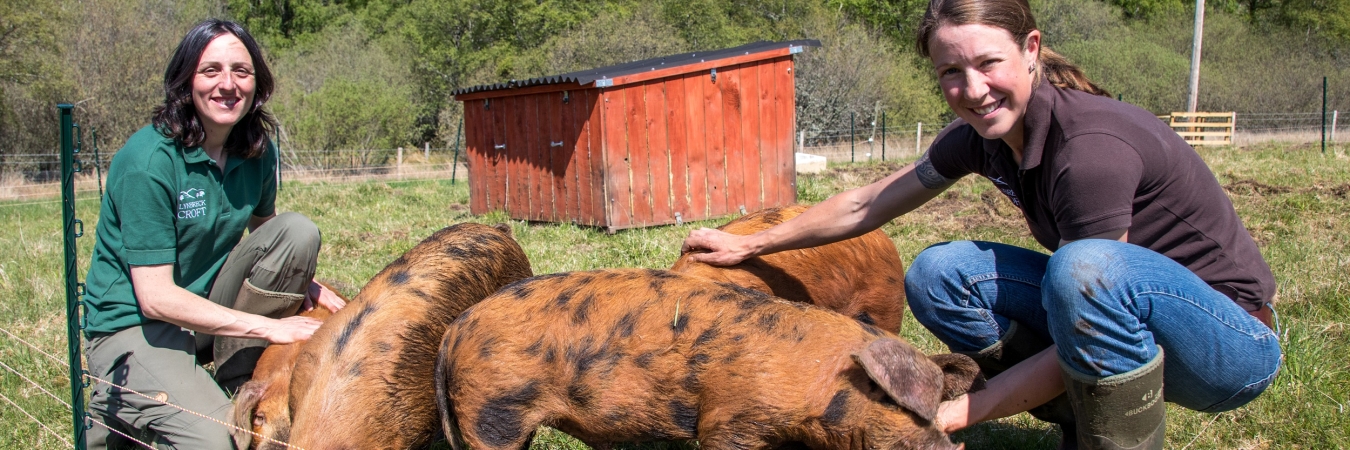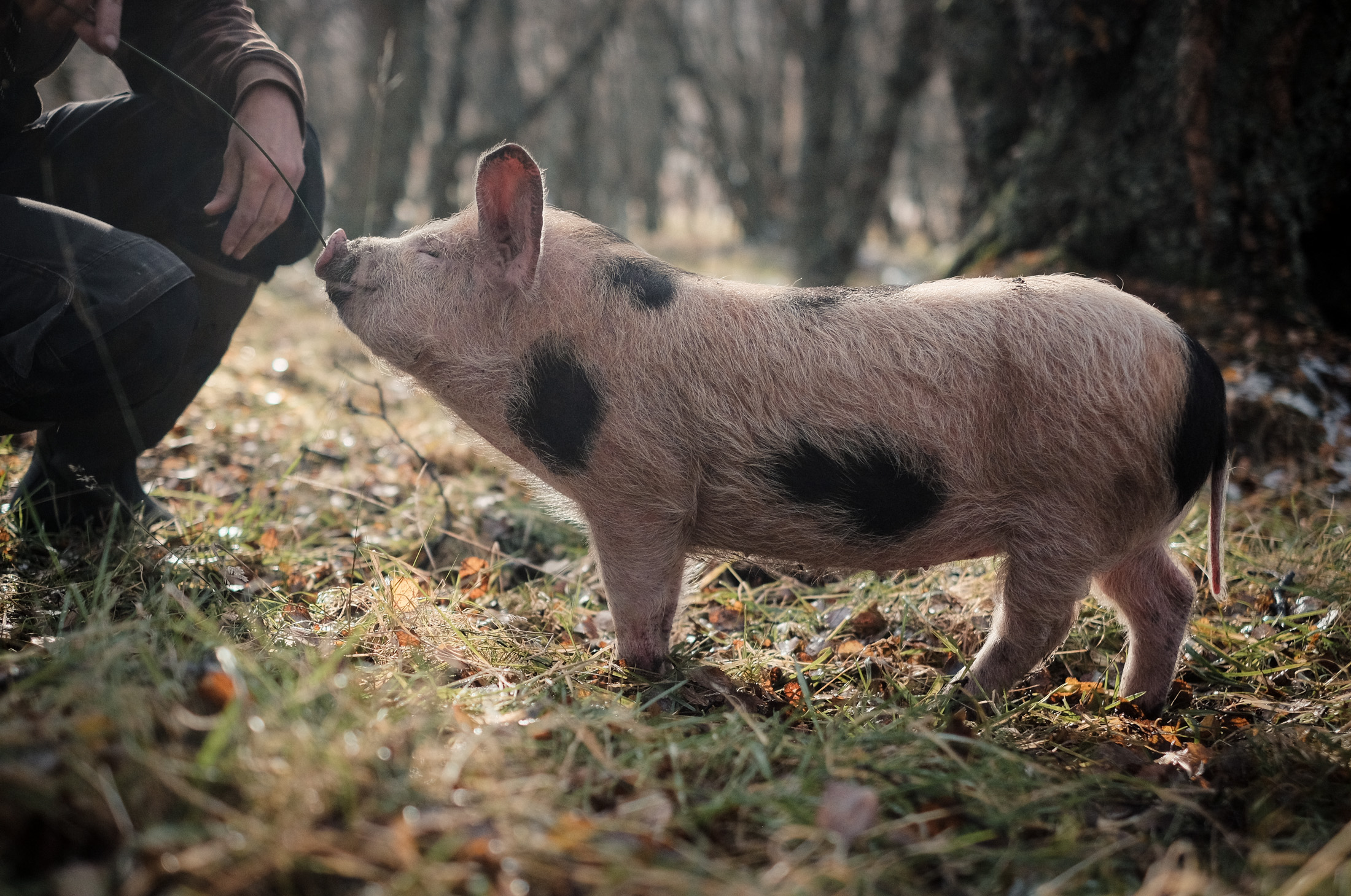Lynn Cassells and Sandra Baer
Lynbreck Croft, Strathspey
We moved to Lynbreck (which is located in the Cairngorms National Park in the Scottish Highlands) in March 2016. Our goal is to work with natural processes to farm with nature, to work within the highest animal welfare standards, and to reconnect people with the environment and where their food comes from.
The landholding is a 150 acre registered croft which comprises of in-bye fields (c. 15 acres) rough grazing of mainly heather moorland (c. 125 acres) and birch woodland (c. 10 acres). There had been no active agricultural management on the croft for at least the previous 30 years to us buying Lynbreck. Before that, the croft had a mixture of sheep and cows and there were areas ploughed for crops.
We believe in choosing the animals that are suited to our land, rather than trying to change the land to suit our choice of animal. We currently have a fold of Highland Cattle, mixed size groups of rare breed Oxford Sandy and Black pigs, free ranging pasture laying hens, and native Scottish black honeybees.
Our pigs are moved around in paddocks, breaking up tufts of vegetation and allowing plants and saplings to break through (with regular, weekly moves, they never stay in one place long enough to root up and expose large swathes of bare soil). The cattle are also grazed on a rotational basis, breaking up the tussocky grass, and the chickens scatter the cow pats around spreading the natural fertiliser (they’re also great at keeping the weeds down). These low intensity practices promote establishment of a more species-rich habitat, which the bees help enrich further, pollinating the various grasses, wildflowers and trees.
Better grassland and readily available fertiliser create new homes for both invertebrates and small mammals, which in turn serve the local bird populations. By creating a healthy soil and a strong root system, we also reduce the risk of erosion and slow down water runoff.
In the growing season, the cattle are moved daily into new paddocks. We try to make sure they never take too much grass, never staying long enough in one place to overgraze, but always depositing the important natural fertiliser we need to keep our land healthy.
We sell all of our produce directly to the consumer locally via a number of sales methods:
- Subscription clubs for weekly egg deliveries and/or specialist added value monthly meat deliveries
- Seasonal meat boxes
Our goal is to stack enterprises to generate income from different sources to improve business resilience and viability. We offer the following:
- Produce sales
- On farm butchery for processing and added value produce
- On farm engagement – public and private tours, working with tour companies, running farm business start up and skills courses
- Off farm engagement – talks and presentations
- Holiday rental – conversion of an old building (pending)
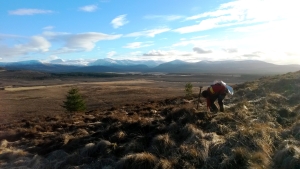
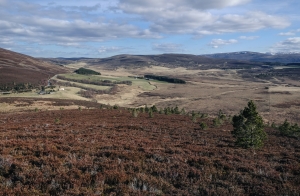

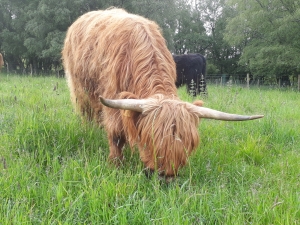

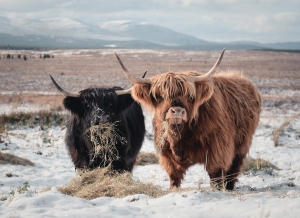

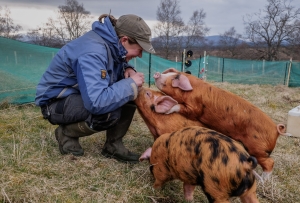

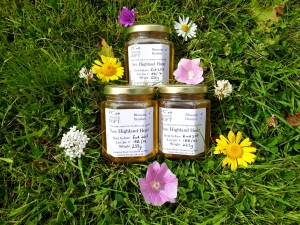
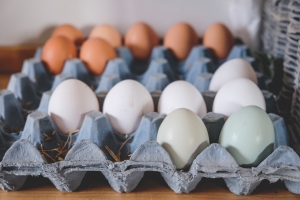
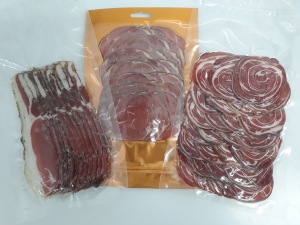
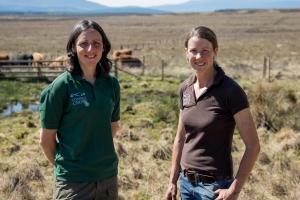
Sustainability in practice
Tree hay

Over the past few years, we have noticed an increase in the price of hay and the challenges in our area to find a suitable weather window in which to cut hay due to climate change and wetter summers. It’s also very difficult to source affordable organic hay. Alongside using grazing techniques and lower stocking densities to maximise our own naturally available grass, we were keen to look into alternative feed that we could grow and harvest on site and that would provide important forage diversity our animals would need.
We were introduced to tree hay by Ted Green from the Ancient Tree Forum when we lived and worked in the south of England. Ted taught us how it was grown, harvested and used traditionally in farming systems to feed animals over winter. Over the years we have learned more about the medicinal and nutritional benefits of tree fodder through our own reading and conversations with experts like Lindsay Whistance from the Organic Research Centre.
As a result we approached the Woodland Trust with a funding proposal to plant 10 tree hay crops of mostly grey willow as an experiment. The plan was to pollard 2 copses on a 5 year rotation and the project was supported and subsequently planted in October 2018.
As we wait for the copses to mature, we are experimenting with cutting and harvesting tree hay using what we can from our existing woodlands. We are trying to overcome practical challenges including efficient harvesting, drying and storage. We are also experimenting with how to feed our animals the dried bundles by hanging them from fences and monitoring which species appear more in demand than others.
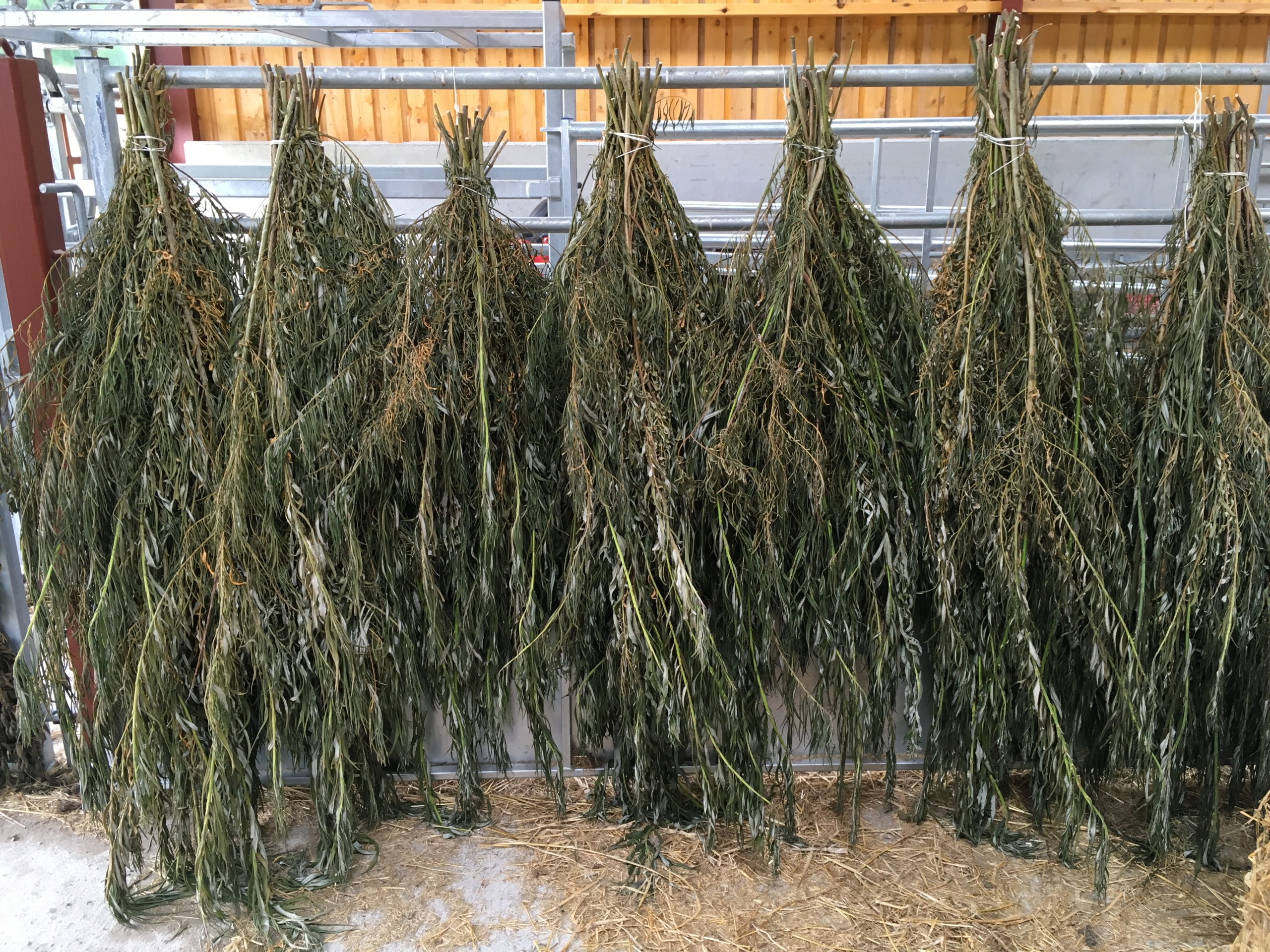
In time we hope to see a range of benefits. At present our cattle get access to a mineral lick (which also has seeds contained within it, helping to regenerate the pasture with wild flowers and grasses). Overtime as we improve pasture diversity and leaf forage, we would hope to phase the use of that out. We hope it will also reduce our hay bill. Cattle can access 12% of their annual diet through tree leaves which could relate to a few bales of hay less per winter. We would encourage others to consider utilising tree fodder and tree hay as part of their farm operations. Simply allowing and observing browse on hedgerows and existing trees can be a useful place to start.
Watch the video below to find out more…
Motivations
Neither of us come from a farming background. Lynn qualified and worked as an archaeologist from university in Birmingham and Sandra trained and worked as a librarian in her home town of Zurich. We both had a draw to the land and ended up working as apprentice Rangers for the National Trust where we met in the south of England. Our training here helped to develop our range of practical skills and also gave us a basic introduction to ecology. We moved to Scotland in 2014 in search of land and ended up working in rewilding and upland woodland planting. When we eventually found and bought Lynbreck, it was really by accident that we came into farming. We had no money and very little experience but a blank canvas to start with.
Regenerative farming and food production sits at the core of what we do. We see the health of our land, of our animals and of ourselves as our core assets. We believe that farming in harmony with natural processes is the key to long term food security, productivity and personal and planetary health.
We are motivated by the belief in what we do and the landscape in which we work. Initially we were motivated by providing for ourselves as much as possible from the land and by maintaining good physical and emotional well-being. This has grown into sharing our story positively on a wider platform to provide a working example of a viable small scale farm that delivers positive outcomes for nature. We don’t want to tell others what to do, we want to be a positive example of what can be done.
We are very proud of what we have achieved since 2016. Our future goals for Lynbreck include
- Expanding our outreach and engagement work
- Improving our specific farming practices eg natural grazing systems, tree hay growing and harvesting
- Expanding existing farm enterprises, in particular laying hens and bees
- Finalising and delivery of a large agroforestry project, incorporating more ‘productive’ trees within our field systems
- Completing our holiday cottage renovation
- Expanding our own kitchen garden as a model for food production
Our greatest achievement from our work at Lynbreck has been to build something from nothing. More specifically to provide food regularly for our local community and to contribute to growing conversations around food sovereignty and developing agroecological farming practices.
We are part of the Nature Friendly Farming Network – a community of farmers who believe like us that nature means business.
|
Image credits (for those not included in the slider): Header image – Barrie Williams. Cattle sheltering under trees and tree hay – Lynbreck Croft. Tickling pig – Sandra Angers Blondin
The video below takes you on a virtual tour of the habitats and landscape of Lynbreck, and explains how we are building our business. Click here to view other videos from Lynbreck Croft.
